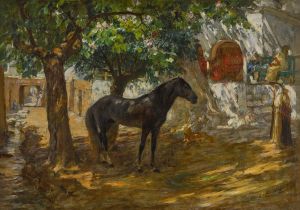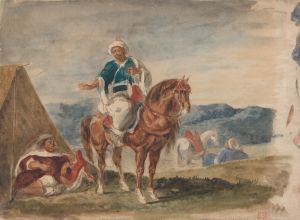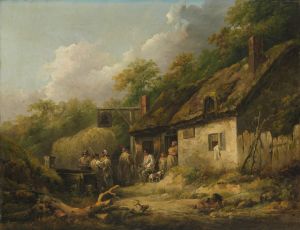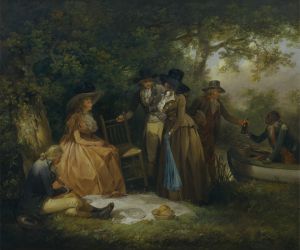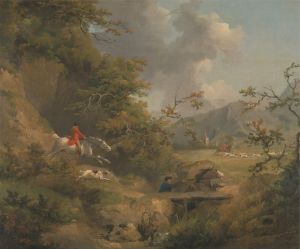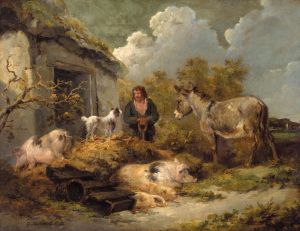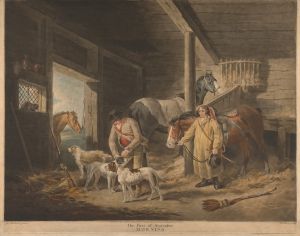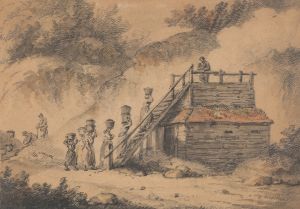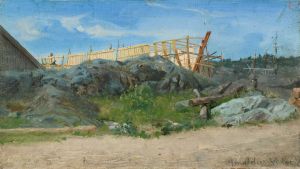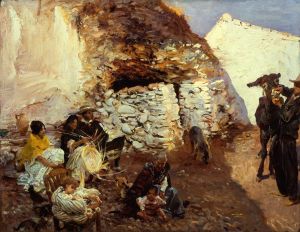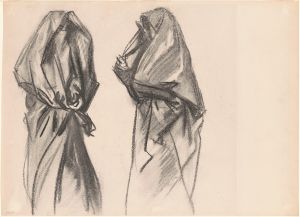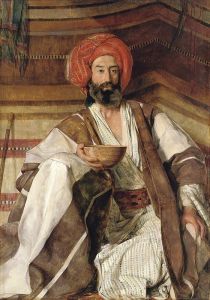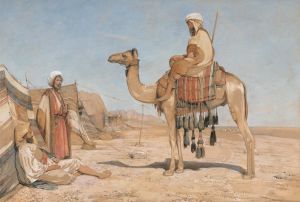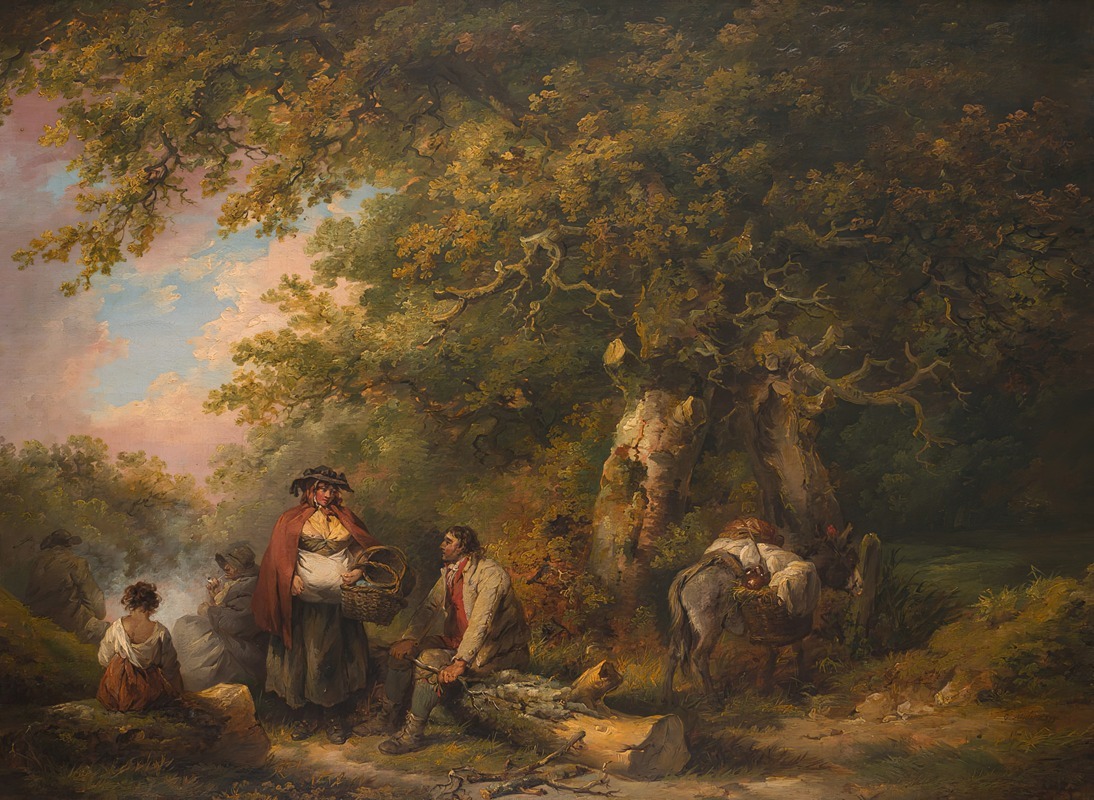
Gypsy Encampment with Seated Man Breaking Firewood
A hand-painted replica of George Morland’s masterpiece Gypsy Encampment with Seated Man Breaking Firewood, meticulously crafted by professional artists to capture the true essence of the original. Each piece is created with museum-quality canvas and rare mineral pigments, carefully painted by experienced artists with delicate brushstrokes and rich, layered colors to perfectly recreate the texture of the original artwork. Unlike machine-printed reproductions, this hand-painted version brings the painting to life, infused with the artist’s emotions and skill in every stroke. Whether for personal collection or home decoration, it instantly elevates the artistic atmosphere of any space.
"Gypsy Encampment with Seated Man Breaking Firewood" is a painting by the British artist George Morland, who was active during the late 18th and early 19th centuries. Morland, born in London in 1763, was known for his genre paintings that often depicted rural scenes, rustic life, and the lives of the lower classes. His works are characterized by their detailed and realistic portrayal of everyday activities, and he gained considerable popularity during his lifetime.
This particular painting, "Gypsy Encampment with Seated Man Breaking Firewood," is an excellent example of Morland's ability to capture the essence of rural life. The painting depicts a scene of a gypsy encampment, a subject that was relatively common in Morland's oeuvre. In the foreground, a man is seated on the ground, engaged in the act of breaking firewood. His posture and the effort he exerts are rendered with a keen eye for detail, showcasing Morland's skill in depicting human figures and their activities.
Around the man, the encampment is depicted with various elements that suggest a transient lifestyle. There are makeshift tents, a fire, and other figures, including women and children, who are engaged in their daily routines. The setting is likely a rural or forested area, which adds to the sense of a nomadic existence. Morland's use of light and shadow in the painting helps to create a realistic and atmospheric scene, drawing the viewer into the world of the gypsies.
Morland's interest in depicting gypsy life was part of a broader trend in 18th-century British art, where artists sought to explore and document the lives of marginalized and itinerant communities. These works often carried a sense of romanticism and exoticism, reflecting contemporary attitudes towards gypsies and other nomadic groups. However, Morland's paintings are also noted for their sympathetic and humanizing portrayal of his subjects, avoiding the more sensationalist or caricatured depictions that were common in some other works of the period.
The painting is executed in oil on canvas, a medium that Morland frequently used. His technique involved loose and expressive brushwork, which allowed him to capture the textures and details of the scene effectively. The color palette is typically earthy and muted, with natural tones that enhance the realism of the setting.
George Morland's works, including "Gypsy Encampment with Seated Man Breaking Firewood," are held in various public and private collections. His paintings continue to be appreciated for their historical value and their insight into the social conditions of his time. Morland's ability to depict the everyday lives of ordinary people with empathy and realism has secured his place in the history of British art.
In summary, "Gypsy Encampment with Seated Man Breaking Firewood" is a notable work by George Morland that exemplifies his talent for genre painting and his interest in rural and itinerant life. The painting's detailed and realistic portrayal of a gypsy encampment offers a glimpse into the lives of marginalized communities in 18th-century Britain, rendered with the artist's characteristic empathy and skill.





